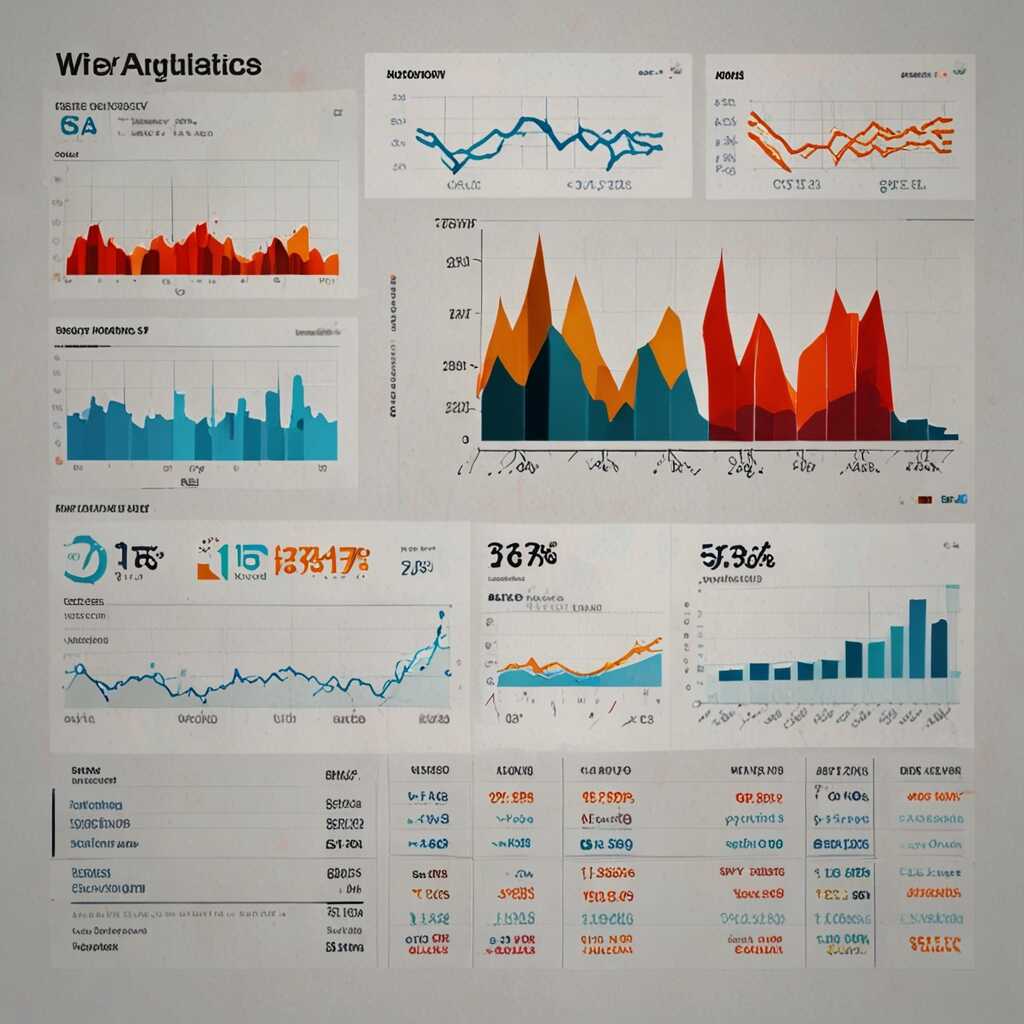Enhancing website performance through the HTTP/2 protocol can significantly boost your site’s speed and user experience. This modern protocol improves how data is transmitted, leading to faster loading times and better interaction on your website. At Metrics Rule, we understand that optimizing your website’s technical components is crucial for effective SEO strategies and overall site performance. By leveraging HTTP/2, webmasters and digital marketers can ensure a robust foundation for enhanced visibility and user satisfaction.
Understanding the Basics of HTTP/2 and Its Advantages
HTTP/2 is the second major version of the Hypertext Transfer Protocol, designed to improve on the limitations of HTTP/1.1. One significant difference is its ability to send multiple requests in a single TCP connection, which reduces latency and enhances website performance. Key features include header compression, multiplexing, and prioritization of requests. These enhancements not only improve load times but also provide a better user experience, key aspects that matter for SEO strategies. As more businesses recognize the importance of page speed and user engagement, the transition to HTTP/2 becomes essential for staying competitive.
Key Features of HTTP/2 That Enhance Performance
HTTP/2 offers several essential features that significantly enhance website performance. Multiplexing allows multiple requests to be sent simultaneously over a single connection, which reduces delays commonly found in HTTP/1.1. Header compression ensures that smaller amounts of data are transmitted, increasing efficiency in data transfer. Additionally, server push capabilities enable the anticipation of resources needed by the client, allowing them to be sent preemptively. These technical optimizations contribute to faster page load times, which are crucial for SEO strategies. By improving overall performance, HTTP/2 helps businesses achieve better search engine rankings and deliver an improved user experience.
The Crucial Role of Website Speed in SEO Success
Website speed is critical for SEO rankings and overall user engagement. Fast-loading websites improve user experience, leading to lower bounce rates and higher engagement. Search engines like Google prioritize fast websites in their rankings. A slow site can frustrate users, causing them to leave before the page fully loads. The negative effects of slow loading times include decreased traffic and fewer conversions, with potential revenue loss for businesses. Research shows that a one-second delay in page load time can lead to a 7% reduction in conversions, illustrating just how essential speed is for both SEO and business success.
Understanding the Impact of Loading Times on Conversions
Loading times significantly impact conversions. The faster your website loads, the more likely visitors will complete a desired action, such as purchasing a product or filling out a contact form. For e-commerce sites, every second counts. According to recent studies, a one-second delay can decrease conversions by as much as 20%. This means that ensuring optimal website speed isn’t just an SEO strategy; it’s a vital part of your business model. Tools like Google’s PageSpeed Insights can help analyze your site’s performance and provide essential recommendations for improvement. By enhancing website speed, you not only strengthen your SEO efforts but also boost user satisfaction and drive sales.

Essential HTTP/2 Features That Boost Web Performance
The HTTP/2 protocol introduces several essential features that enhance web performance, such as multiplexing, server push, and header compression. Multiplexing allows multiple requests to be sent over a single connection, reducing latency and providing a more efficient way to load resources. Server push enables servers to anticipate user needs and send resources proactively, which helps in speeding up page loading times. Header compression minimizes the overhead of HTTP headers, making data transmission more efficient. Understanding these features is crucial for webmasters and SEO specialists aiming to optimize their websites and improve search engine performance.
Understanding Multiplexing and Its Impact on User Experience
Multiplexing is a key feature of HTTP/2 that significantly improves user experience. By allowing multiple streams of data to be sent simultaneously over a single connection, it reduces the time users wait for web pages to load. Traditional HTTP/1.1 limits connections, leading to delays, especially when multiple resources are needed. With HTTP/2 multiplexing, webmasters can ensure faster loading times for images, scripts, and stylesheets. This enhanced speed not only improves user satisfaction but also has positive implications for search engine indexing. Faster websites often achieve higher rankings, leading to greater visibility on platforms like Google and Bing. Thus, leveraging multiplexing can deliver measurable results in both performance and SEO effectiveness.
Key Numerical Insights into Modern Protocols
- HTTP/2 can improve loading speed by up to 70% compared to HTTP/1.1.
- The protocol reduces the number of connections to a server, enhancing efficiency.
- Over 40% of websites now use HTTP/2 for better performance.
- HTTP/2 supports multiplexing, allowing multiple requests in a single connection.
- It optimizes resources with header compression, reducing data size.
- Studies show that fast websites can increase user engagement by 30%.
- Using HTTP/2 can increase ad viewability by 40%, enhancing revenue potential.

Impact of HTTP/1.1 Versus HTTP/2 on Performance Outcomes
The key performance differences between HTTP/1.1 and HTTP/2 lie in the way data is transferred and optimized. HTTP/1.1 uses a request-response model that often leads to multiple round trips for resources, which increases loading times. In contrast, HTTP/2 streamlines data transfer through multiplexing, enabling multiple requests and responses to be sent simultaneously over a single connection. This major shift enhances reliability and efficiency, providing significant improvements in website loading times. Many web technologies benefit from HTTP/2, including content delivery networks (CDNs), SSL/TLS encryption, and responsive design frameworks. Some studies suggest that transitioning to HTTP/2 can reduce loading times by 20% to 50%, thereby improving SEO and user experience.
Critical Benefits of HTTP/2 for Modern Websites
HTTP/2 provides critical advantages for modern websites by optimizing resource loading. The enhanced data transfer protocols, including header compression and priority streams, ensure that fundamental resources like CSS, images, and scripts are loaded more efficiently. Websites that implement HTTP/2 typically see notable improvements in performance metrics such as Time to First Byte (TTFB) and overall page load speeds. This efficiency is especially beneficial for e-commerce websites, where quick loading times can lead to increased conversion rates. Additionally, using HTTP/2 helps with mobile browsing experiences by reducing latency, making the site feel faster and more responsive. Because Metrics Rule specializes in technical optimization, we can help you transition seamlessly to HTTP/2, ensuring your website takes full advantage of these modern features.

Step-by-Step Guide to Enabling HTTP/2 for Your Website
To successfully enable HTTP/2 on your website, you need to meet specific server requirements. First, ensure your server supports HTTP/2 and is running on a secure HTTPS connection. Most modern web servers, including Apache, Nginx, and IIS, can handle this. The configuration steps vary by server type. For instance, Apache requires the ‘mod_http2’ module; Nginx requires the ‘http2’ directive in the server block. Once configured, expect the transition to take between a few minutes to several hours, depending on server load and traffic. Implement testing tools like Google PageSpeed Insights to review performance enhancements post-transition.
Detailed Configuration for Apache, Nginx, and IIS
Configuring HTTP/2 for your server involves a few essential steps. For Apache, ensure that the ‘mod_http2’ module is enabled by adding ‘LoadModule http2_module modules/mod_http2.so’ in your configuration file. Next, implement the ‘Protocols h2 http/1.1’ directive within your ‘VirtualHost’ section. For Nginx, simply include ‘http2’ in your ‘listen’ directive under the server block. In IIS, enable HTTP/2 via Feature Delegation. This specific configuration can enhance your website’s performance significantly by improving loading speeds, which is crucial for SEO. Ensure you also run regular tests to observe the efficiency of your new setup.
Advantages of the Latest Web Communication Protocols
- Improved website speed leads to higher user satisfaction and retention.
- HTTP/2 allows faster content delivery, enhancing site responsiveness.
- It offers better prioritization of resources, leading to efficient loading.
- Search engines reward faster websites, positively impacting SEO efforts.
- Reduced latency results in smoother browsing experiences for users.
- Enhanced security features are built into HTTP/2 for safer connections.
- High performing sites can expect better conversions and sales rates.

Clarifying Misunderstandings Surrounding HTTP/2
Many common myths surround HTTP/2, causing confusion among web developers and SEO specialists. A prevalent misconception is that HTTP/2 requires major changes to server infrastructure. In reality, most modern web servers support the protocol with minimal configuration. Another myth suggests that HTTP/2 mainly enhances streaming services. However, it significantly improves website efficiency and user experience for all types of websites, including ecommerce platforms. Performance comparisons show that HTTP/2 can deliver data up to 80% faster than HTTP/1.1. This speed increase helps reduce loading times, thereby enhancing SEO and ensuring better indexing by search engines.
Comparing HTTP/1.1 and HTTP/2: A Detailed Analysis
Understanding the technical features that differentiate HTTP/1.1 from HTTP/2 is essential for webmasters. HTTP/2 streamlines data transfer by allowing multiple simultaneous requests over a single connection, which HTTP/1.1 could not do efficiently. This multiplexing capability reduces latency and enhances download speeds. Compression of HTTP headers further improves data transmission, making HTTP/2 more efficient overall. As users move towards more interactive and dynamic internet experiences, adopting HTTP/2 can dramatically improve a site’s performance. Metrics Rule in Vancouver recommends testing your website’s speed with both protocols to experience firsthand the performance benefits of HTTP/2.
Assessing the Benefits of HTTP/2 on Website Performance
To measure the performance improvements obtained after implementing HTTP/2, several effective tools and metrics can be utilized. Tools like Google PageSpeed Insights and GTmetrix help analyze loading speed, providing detailed reports on various performance metrics. These tools can track essential aspects such as Time to First Byte (TTFB), full page load times, and overall efficiency gains gained from HTTP/2 features, like multiplexing and server push. Real user monitoring (RUM) tools, such as New Relic or Google Analytics, also provide insights into how actual users experience your site. By comparing data from before and after HTTP/2 implementation, you can see tangible results in website performance.
Understanding Industry Variations in HTTP/2 Impact
The impact of HTTP/2 on website performance can significantly vary across different industries. For instance, e-commerce websites often rely heavily on fast loading times to enhance user experience and conversion rates. With HTTP/2, these sites can achieve a smoother, quicker browsing experience, which directly influences sales. Industries like media and content delivery can benefit from HTTP/2’s ability to manage multiple requests efficiently. By understanding this relationship, webmasters can better tailor their optimization strategies, ensuring they are maximizing performance enhancements specific to their industry needs.
Notable Players and Their Strategies in Web Performance
- Akamai provides extensive services for content delivery and website optimization.
- Cloudflare focuses on security and performance enhancements for users.
- Amazon Web Services (AWS) offers scalable solutions for varied web traffic.
- Google Cloud Platform excels in data analytics and faster access speeds.
- MediaTek targets mobile service providers with tailored web solutions.
- Shopify appeals to e-commerce businesses needing seamless performance.
- Squarespace serves creative professionals looking for user-friendly design.
Looking Forward: The Future of Web Protocols and Optimization
As we look ahead to 2025, key trends in web protocols and optimization strategies are crucial for enhancing website performance. Emerging technologies such as HTTP/3 and advanced protocols promise improved reliability and efficiency. Companies like Google and Facebook are leading this change, utilizing innovative methods to ensure faster loading times and better user experiences. These advancements will focus on smart data transfer and optimizing for mobile, leveraging AI for enhanced decision-making, and providing real-time analysis that helps webmasters stay competitive in search engine rankings.
How HTTP/2 and Future Technologies Enhance Website Performance
Understanding how HTTP/2 improves website performance is essential for webmasters and marketers. HTTP/2 enables faster page loads, reduced latency, and efficient multiplexing of requests. By supporting header compression and prioritization, it enhances the way data is transmitted, making it ideal for e-commerce sites. In 2025, further advancements, such as HTTP/3, are expected to be widely adopted, offering even greater benefits, including improved support for mobile and complex applications. Investing in these technologies will ensure that your website remains relevant and competitive, providing visitors with a seamless browsing experience.
